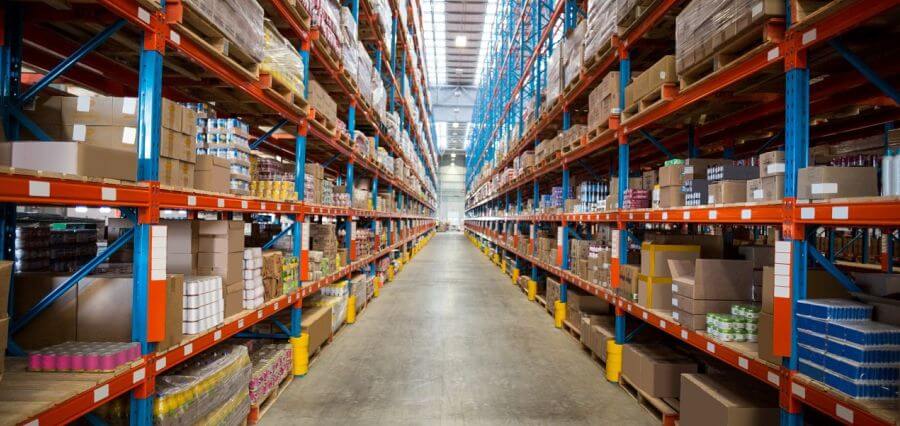Efficient warehouse storage is at the heart of a successful supply chain management system. With the ever-evolving demands of the market and the increasing complexities of logistics, modernizing warehouse storage is not just an option but a necessity. Two key components in this modernization process are metal shelving and storage containers. These elements play a vital role in maximizing space utilization, optimizing inventory management, and enhancing overall operational efficiency. In this article, we will delve into strategies for improving warehouse storage through the utilization of metal shelving and storage containers.
- Embracing Metal Shelving: A Foundation for Efficiency
Metal shelving systems are the backbone of any well-organised warehouse. They offer durability, versatility, and adaptability, making them an ideal choice for modern storage needs.
Customized Layouts for Space Optimisation:
One size does not fit all when it comes to warehouse storage. Modern metal shelving systems offer customizable layouts that can be tailored to the unique dimensions of the warehouse. This ensures optimal utilization of available space, from floor to ceiling.
Modularity and Expandability:
Modern metal shelving units are designed with modularity in mind. This allows for easy expansion as your inventory grows. Whether you need additional shelves, extensions, or new configurations, these systems can adapt to your changing needs without disrupting operations.
Integrated Inventory Management:
Some metal shelving units come with built-in technology for inventory tracking. RFID tags and barcode systems can be integrated to provide real-time information about stock levels and item locations. This streamlines inventory management and reduces the risk of errors.
- Efficiency Amplified: Storage Containers Take the Stage
Storage containers have come a long way from being simple boxes to becoming smart, stackable solutions that optimize warehouse storage.
Categorization and Segmentation:
One of the fundamental principles of efficient warehouse storage is categorization. Storage containers aid in this process by allowing items to be neatly segregated based on factors such as size, type, and demand frequency. This minimizes the time spent searching for specific items and enhances order-picking efficiency.
Space-Efficient Stackability:
Modern storage containers are designed to maximize vertical space. Their stackable nature means that warehouses can make the most of their cubic footage. This is particularly beneficial for items that are not frequently accessed, as it prevents valuable floor space from being underutilized.
Durability and Protection:
Certain items in a warehouse might require protection from dust, moisture, or impact. High-quality storage containers offer durability and safeguarding, ensuring that your inventory remains in pristine condition.
- Synchronisation for Supercharged Storage
To truly modernize warehouse storage, the synergy between metal shelving and storage containers must be leveraged.
Optimized Space Utilisation:
Combining the vertical advantage of metal shelving with the systematic organization of storage containers creates a dynamic storage environment. Items can be stored in containers on shelves, allowing for a structured arrangement that maximizes space and accessibility.
Efficient Order Fulfilment:
The synchronization between metal shelving and storage containers significantly speeds up order fulfillment processes. With well-organized shelves and categorized containers, warehouse staff can quickly locate items, leading to faster packing and shipping times.
Adaptability to Seasonal Changes:
Warehouses often experience fluctuations in demand due to seasonal trends. The combination of metal shelving and storage containers allows for seamless adaptability. As demand shifts, containers can be easily reorganized on the shelves to accommodate the changing inventory landscape.
- Technology Integration: The Final Touch
In the era of Industry 4.0, technology integration completes the modernization puzzle.
Automated Retrieval Systems:
Advanced warehouses are adopting automated retrieval systems that work in tandem with metal shelving and storage containers. These systems use robotics to retrieve specific containers from shelves, reducing the need for manual labor and enhancing precision.
Data-Driven Insights:
Modern warehouse management systems provide valuable data insights. By analyzing trends in inventory movement and order processing, warehouse managers can fine-tune their storage strategies for maximum efficiency.
Conclusion
In conclusion, modernizing warehouse storage is an intricate process that requires a strategic approach. Metal shelving and storage containers form a powerful duo that can revolutionize how warehouses operate. By embracing customizable layouts, smart storage containers, synchronization strategies, and technology integration, warehouses can achieve optimal space utilization, streamlined inventory management, and efficient order fulfillment. As the logistics landscape continues to evolve, those who invest in these modernization strategies will be poised for success in the competitive world of supply chain management.


